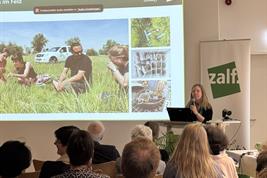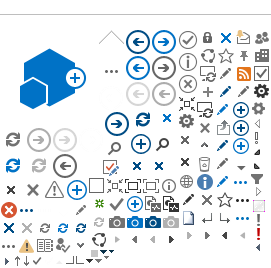18.11.2024

Two winners received the Müncheberg Research Award for the year 2024 on the 14th November, 2024. Gunvor Colind Helweg-Larsen was honored for her master's thesis on ideas for more inclusive food production and Karla Marie Barfuss wrote her master's thesis on the influence of mycorrhizal fungi on the nutrient uptake of plants and the development of plant roots.
Jörg Dießl, representative of the Mayor of Müncheberg, and Martin Jank, Administrative Director of ZALF, presented the award winners with their certificates at a ceremony on Thursday. The award recognizes outstanding research achievements with significance for the research town of Müncheberg and the region and aims to support young scientists.
In her master's thesis entitled "Exploring the economic trade-off between plant root hairs and mycorrhizal symbiotic partners", Karla Marie Barfuss investigated the nutrient uptake of plants. The findings from the thesis are important to better understand how plants deal with resources in different environments and which strategies they use to absorb nutrients efficiently. The work bridges the gap between basic research and applied landscape research and provides a wealth of data for further investigation.
Plant nutrient uptake takes place either through the fine roots of the plants themselves or through a symbiosis with certain fungi, the so-called arbuscular mycorrhizal fungi. In the study presented here, Barfuss examined more than 800 root samples of 81 plant species from grasslands in Brandenburg as well as central and southern Germany. She analysed the root properties, in particular root hairs, and the colonization rate by these fungi. The results of the study show that there is an antagonistic correlation between the development of root hairs and colonization by mycorrhizal fungi. The study also found that these relationships exist both between different species and within individual species, as well as within individual plants.
Karla Maria Barfuss completed her degree in “Biodiversity, Evolution, Ecology” at the Freie Universität Berlin in 2023. Her master's thesis was supervised by Dr. Joana Bergmann in the "Sustainable Grassland Systems" working group at ZALF.
In her master's thesis, Gunvor Colind Helweg-Larsen examined the future visions of conventional, organic and biodynamic farmers in Eastern Brandenburg. The study is entitled "Inclusive visions of future food production across diverse farms in north-east Germany". Recent farmers' protests in Europe express the multiple pressures on farms. Discourses in the public debate on food production often do not include the diverse positions of farmers. Against this backdrop, Helweg-Larsen's study aimed to identify common values among farmers and create a basis for solidarity-based and future-oriented solutions.
With the help of interviews with twelve farmers representing different farming systems and farm sizes, the author identified three main visions: "conservation", "modernization" and "transformation". Smaller organic farms tended to have a transformation vision, while larger conventional farms often had a conservation vision. Behind these sometimes conflicting visions, however, there were shared values such as altruism and a strong human-nature relationship. The work showed that despite structural differences, there was a willingness for solidarity among farms. These findings could promote dialog between farmers and the rest of the rural population and help to shape a shared, value-based vision of the future. The study lays a foundation for future cooperation between science and practice and emphasizes the importance of democratic cooperation based on solidarity.
Helweg-Larsen completed her master’s degree at the Humboldt-Universität zu Berlin. Her master's thesis was supervised at ZALF by Prof. Dr. Sonoko Bellingrath-Kimura and Dr. Maria Kernecker in the working group "Land Use Decisions in the Spatial and Systems Context".
Further information:
Projekt-Website HAIRphae: The economic trade-off between root hairs and mycorrhizal extraradical hyphae along a land-use gradient [Link]
